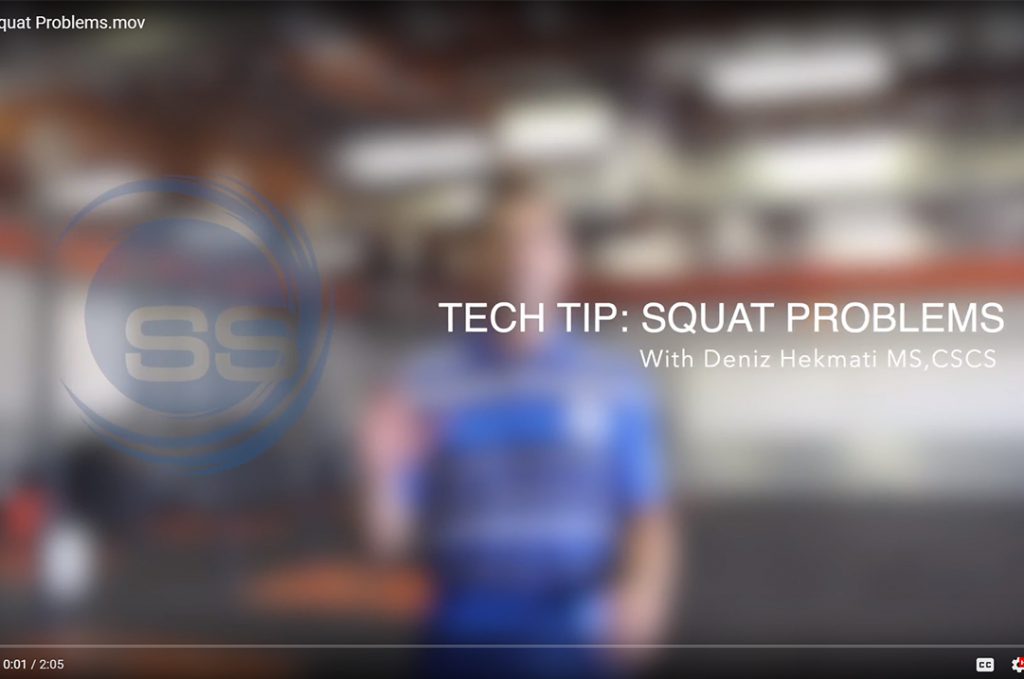Swimmer Strength Tech Tip: Squat Problems

Contributed by Deniz Hekmati – Strength & Conditioning Specialist, Sport Scientist
Deniz Hekmati will be providing regular content on strength and conditioning as Swimming World’s newest dryland contributor.
The squat is frequently prescribed by so many strength, and also swimming coaches. We are tired of witnessing bad squats that lead to injuries.
In the collegiate and the pro to semi-pro level, the squats are more often overseen by qualified strength coaches to ensure safety and technical correctness. On the contrary, young swimmers who only do pool deck dryland heavily rely on the swim coaches for technical cueing and management, and it deeply hurts my soul to see so much imperfect squatting in our sport setting. Continuing to repeat repetitions of improper squats will eventually lead to some sort of injury whether it being back, hips, or knees.
More often than not, one of the common squat problems we see in the swimming community is range of motion.
Watch video
One of the most challenging segments of the squat is to teach a novice athlete to maintain a neutral spine throughout the movement. Additionally, swimmers tend to sway on to their toes and let the knees cave in towards each other, called knee Valgus.
The knees going over the toes is necessarily not a bad thing and will depend on the athlete’s anatomy. In general, a taller athlete may have the knees tracking over the knees because of the long limbs compared to shorter athletes. Tip of the week being, stop prescribing squats to swimmers who can’t do then, rather work on fixing the underlying restrictions to make a bodyweight squat look good, and the starts and turns should immediately get much better.
That’s a wrap up of this week’s topic “Squat Problems.” Next week, we’ll go over the actual squat movement.
See more videos from Swimmer Strength Coach Deniz Hekmati:
Swimmer Strength Tech Tip: Abdominal Bracing
Swimmer Strength Tech Tip: Strength and Dryland Technique Matters
Swimmer Strength Tech Tip: Age to Start Dryland Training or Strength Training
For more information, subscribe to the Swimmer Strength newsletter found on our website swimmerstrength.com.
Note: All swimming and dryland training and instruction should be performed under the supervision of a qualified coach or instructor, and in circumstances that ensure the safety of participants.



